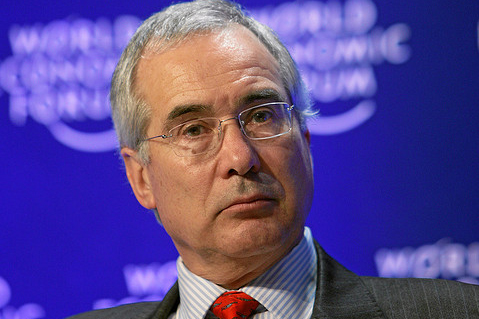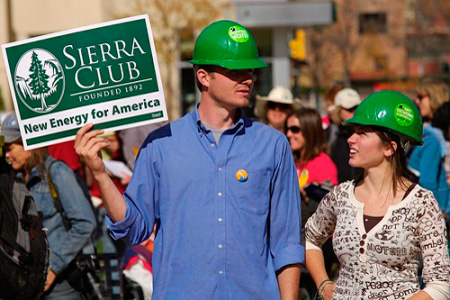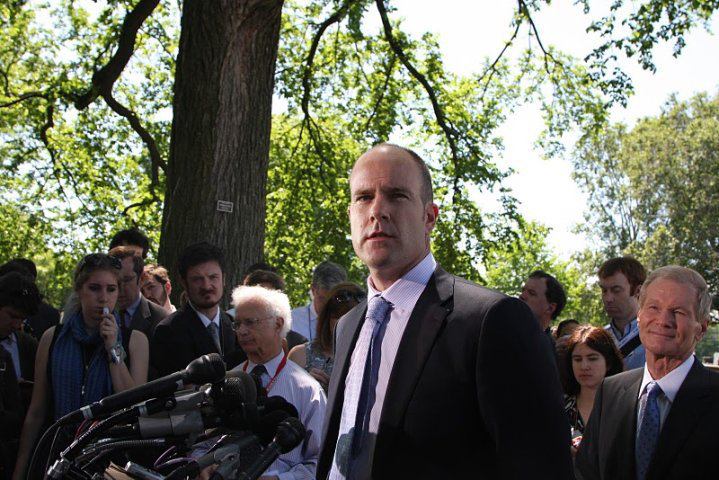Earlier this month, Sierra Club Executive Director Michael Brune announced that the Club would, for the first time in its long and storied history, officially participate in an act of civil disobedience — i.e., break the law. The target? The Keystone XL pipeline. “For civil disobedience to be justified, something must be so wrong that it compels the strongest defensible protest,” he wrote. “Such a protest, if rendered thoughtfully and peacefully, is in fact a profound act of patriotism.”
I called Brune to get some insight on the Club’s thinking and its future plans.
Q. How was this decision made?
A. One of the strengths of the Club is that we are a democratically driven organization. If you’re a member and you write a check for $30, you get to vote on who’s on our board, and the board sets policies. The board voted to authorize the Sierra Club to engage in civil disobedience, to pressure the president to use his full authority to reject the Keystone pipeline. There will likely be a conversation about the Club’s position on civil disobedience more broadly, but all that has happened so far is approval to take this single action.
Q. Obviously nothing is stopping members of Sierra Club from engaging in civil disobedience on their own. What is the significance of this sort of authorization?
A. Sierra Club members and even board members have participated as individuals. What is different now is, one, that the club itself is endorsing this civil disobedience and organizing to make it effective and strategic. And two, we are putting it in the context of a larger plan to support the president in realizing his vision and make sure his ambition meets the scale of the challenge.
Q. What exactly is the action?
A. I can’t tell you that. I’d love to give Grist the inside scoop on it, but if I say, “Hello world, we’re going to be on the corner of 22nd and Z Ave.” … we probably won’t be able to pull it off.
Q. Do you worry that this will cost the Sierra Club access to policymakers, or credibility inside the halls of power?
A. No. The Sierra Club has the most recognized brand in the country on environmental issues; we’ve been around for 120 years; we have millions of members and active supporters who are involved in every state, in every congressional district, in every city, in just about every county in the country. We have a strong track record of being very determined, very relentless, but also strategic and pragmatic in advocating for smarter environmental policies. None of that changes simply because we are also employing civil disobedience. Civil disobedience has a long and proud tradition in our country.
Q. Why did this come up now? Who got it on the agenda?
A. It came from a couple of directions. The Sierra Club has delegates from across the country who gather every year in September. At one of their recent gatherings, they voted to ask the board of directors to allow the club to engage in civil disobedience. This had been done before — there had been many attempts to have the board approve this and none of them went forward. The board tabled for some time, to consider it, and then I helped bring it to the board back in December and a decision was made in January.
Q. What’s changed? Is it the composition of the board of directors, or is it circumstances?
A. It’s all external, really. Look at the year we had – the wildfires, the record drought, the derecho, Superstorm Sandy, a full degree Fahrenheit warmer than we’ve ever seen in the lower 48. That’s an extraordinary year. We have a president who gets the issue, cares about climate change and its impacts on our country, and has elevated climate to the short list of priorities in his second term. Yet the president has considerable executive authority that isn’t being exercised. So what motivated the board is the fact that we need to create political moments that break through the lethargy and the paralysis that is gripping Washington right now in order to help prompt more inspirational leadership.
Q. Why Keystone XL? Obama has EPA power plant regulations coming up. He’s leasing Powder River Basin coal for pennies on the dollar. Those arguably involve more direct CO2 emissions. What it is about Keystone that prompted this?
A. Two reasons: One, by itself, Keystone is a climate disaster. We simply can’t transport 700,000-800,000 barrels of oil [a day] from one of the dirtiest, most carbon-intensive oil sources on the planet and say that we’re sincere in our commitment to fight climate change. You can’t cut carbon pollution and expand production of a carbon-intensive fuel source.
The other reason is that we learned last year from [the International Energy Agency] and Bill McKibben the “New Math.” We know that we have to keep at least two-thirds of all coal, all oil, all gas reserves in the ground if we’re to have a shot at keeping warming below 2 degrees Celsius — which is, in itself, a reckless goal to embrace as a society. If we’re to have a shot at transforming how we look at fossil fuel energy resources, and convincing policymakers, we need symbols. We need to find high-profile, extreme sources of energy and turn away from them, as a way to begin and lead a transition away from dirty fuels.
So when you look at North America, those extreme energy sources are the tar sands, first and foremost. But also mountaintop-removal coal mining, drilling for oil in the Arctic — sadly, there are plenty of targets to choose from. We picked the tar sands because it’s among the most high-profile and highly destructive and it’s going to be one of first big decisions coming from the president in the first half of the year.
Q. What is the role of civil disobedience today? How can it make an impact?
A. Civil disobedience can highlight the urgency of a particular injustice and can increase the profile of a particular problem. It doesn’t always work that way, but it can. Look at the Dreamers if you want a good example of how civil disobedience works. Or look at how gay rights advocates have organized so effectively to bring at least some equality to gay and lesbian Americans in the military or states across the country.
So civil disobedience can be effective. But I would also say: Rarely is it effective if we’re not also employing every other means of social change, whether it’s creative communications, engaging with artists and entertainers, or classic organizing, phone banking, doing stuff online. If we think the only thing missing is civil disobedience, then we’re probably kidding ourselves, because there’s a lot of straight-up hard work to be done to make sure that we’re effective.
Q. Is the Sierra Club going to help with legal defense if there are arrests?
A. I don’t want to get involved in the actual scenario, but we’ll do everything we can to make sure that it’s a peaceful, thoughtful, respectful, and effective demonstration. We will provide the support necessary to pull off the event, but the individuals taking part in it will assume responsibility for their own actions. I will be involved in this event and risking arrest as well.
Q. Has the Sierra Club done anything to coordinate with other groups who are trying to organize similar actions?
A. That’s an excellent question. I’ll be happy to answer it sometime later in February.




